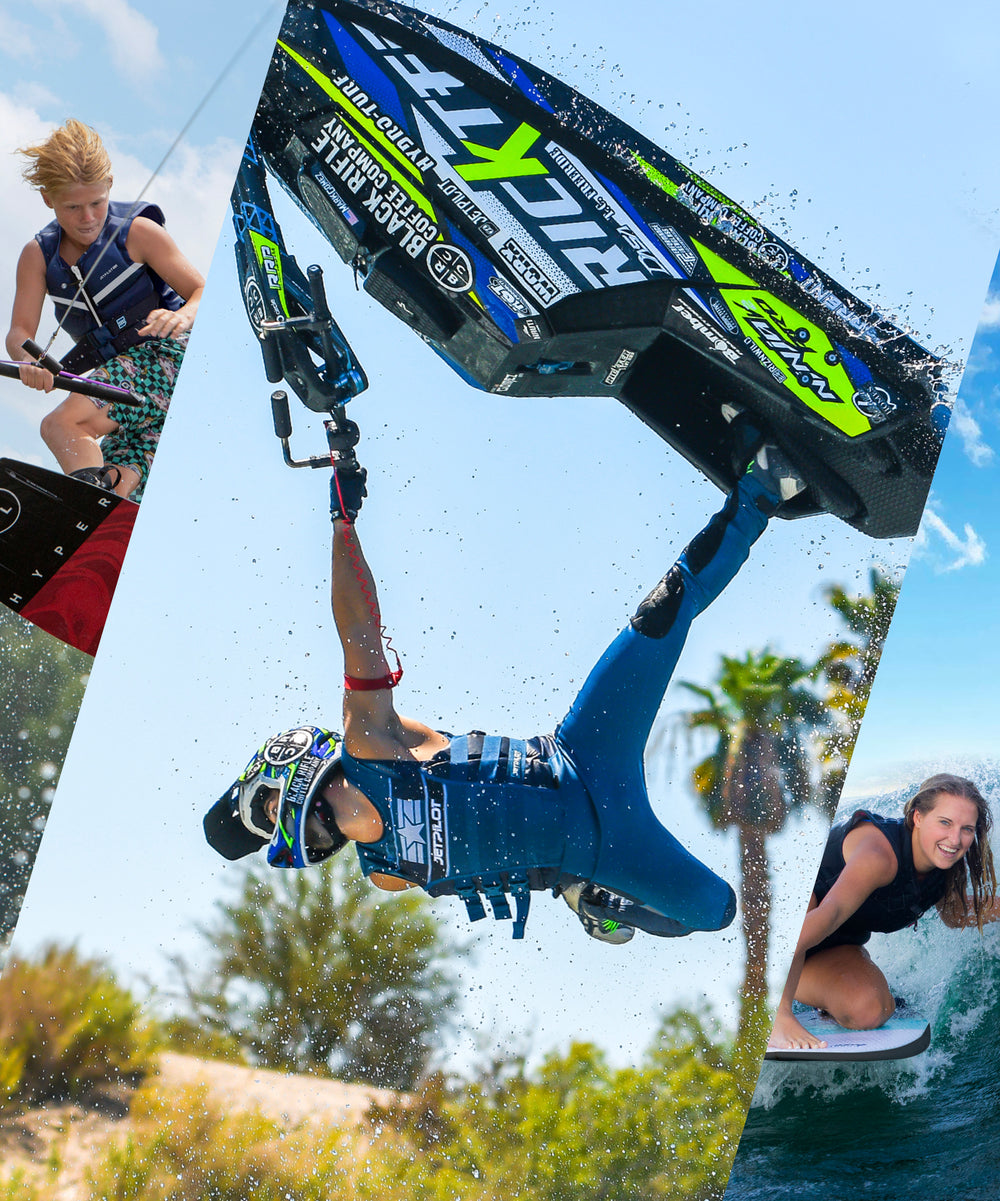How to fit a vest
We recommend using US Coast Guard or Transport Canada approved vests for all your watersports activities.
Coast Guard and Transit Canada approved vests have government standards that are set and monitored by a company called UL. UL’s mission is to help deliver safety, quality, security, sustainability, and confidence. For more information on UL see www.ul.com/news/world-life-jacket-testing.
A few key features to consider when buying and fitting a Coast Guard approved life jacket are materials and closure:
- Neoprene life jackets are softer and more comfortable and tend to stretch slightly when wet. They typically come with both a front zipper and 2 front buckles. When the life jacket is zipped up it should feel snug on your body. The buckles can also be used to make the vest more snug. Make sure the jacket is a tight and snug fit prior to getting wet.
- Nylon life jackets do not have stretch properties and will fit similar in and out of water. They typically do not include a zipper and will have more than 2 buckles to ensure a snug fit. Make sure to tighten the buckles as much as possible to achieve the proper snug fit.
Non coast guard approved vests or comp vests are not standardized and will have different fits form Coast Guard Approved and between different brands. We recommend you follow our fit guide close to find the optimal fit for you.
Fit is critical to ensure the life jacket fits properly, follow the instructions below to choose the right vest.
1. Place a soft measuring tape under your arm and measure the fullest/widest part of the chest or belly while sitting down.
- Properly fit life vests differ from your typical clothing size and should not be based on personal tight or loose fit preferences.
2. Look at the manufacturers label to ensure the vest itself is the proper fit for the wearers size and weight.
3. Put the vest on and make sure it is properly fastened with the buckles and zipper (if applicable) secured.
4. Hold arms straight over the head.
5. Ask a friend to grasp the top of the vest arm openings and gently pull up.
6. Make sure there is no excess room above the openings and that the jacket does not ride up over the chin or face.
- The vest should fit like a second skin and should always remain flush to the body.
7. For the best fit, try the life jacket on in shallow water under safe and supervised conditions.
- A good fitting vest should not ride up on the body in the water, the shoulders of the vest should remain snug and not move up toward the ears.
We take pride in our products and want to ensure our customers have the best possible experience on the water. We fit test our vests and use premium materials that help provide comfort, mobility, and durability.


